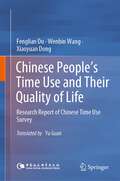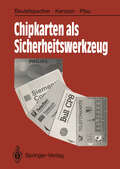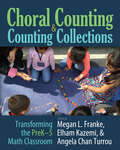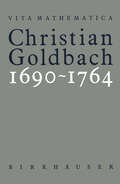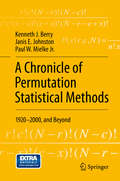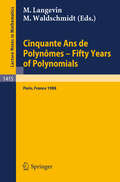- Table View
- List View
Chinese multiplication (UEB contracted)
by RnibThis page shows a labelled diagram. There is a locator dot shown, which will be at the top left, when the image is the correct way up. This image is like an unusual table with three rows and three columns. The first cell in the first row is the tens multiplier and the second cell in the first row is the units multiplier of the first set of multipliers. The last cell in the second row is the tens multiplier and the last cell in the third row is the units multiplier of the second set of multipliers. The second and third cells in the first and second columns are the result of the multiplications. Each cell is split by a diagonal dotted line. The number in the top left is the tens result and the number in the bottom right is the units result. There are diagonal arrows in a line pointing down and left showing the flow of addition. For example the 8 (cell 2, row 2) is added to the 1 (cell 3, row 2) which is added to the 4 (cell 3, row 1) making 13. The units figure 3 goes in the results and the tens figure is carried, going into the top left part of the cell to be added to that number string, so 2 plus 8 plus 0 plus the carried 1 makes 11. Again a tens figure of 1 goes in the top left of cell 2, row 1. The answer is in the bottom left of the page.
Chinese multiplication (UEB uncontracted)
by RnibThis page shows a labelled diagram. There is a locator dot shown, which will be at the top left, when the image is the correct way up. This image is like an unusual table with three rows and three columns. The first cell in the first row is the tens multiplier and the second cell in the first row is the units multiplier of the first set of multipliers. The last cell in the second row is the tens multiplier and the last cell in the third row is the units multiplier of the second set of multipliers. The second and third cells in the first and second columns are the result of the multiplications. Each cell is split by a diagonal dotted line. The number in the top left is the tens result and the number in the bottom right is the units result. There are diagonal arrows in a line pointing down and left showing the flow of addition. For example the 8 (cell 2, row 2) is added to the 1 (cell 3, row 2) which is added to the 4 (cell 3, row 1) making 13. The units figure 3 goes in the results and the tens figure is carried, going into the top left part of the cell to be added to that number string, so 2 plus 8 plus 0 plus the carried 1 makes 11. Again a tens figure of 1 goes in the top left of cell 2, row 1. The answer is in the bottom left of the page.
Chinese People’s Time Use and Their Quality of Life: Research Report of Chinese Time Use Survey
by Fenglian Du Wenbin Wang Xiaoyuan DongThis book analyzes how Chinese people use their time, including how busy Chinese seek a healthy work-life balance, how some children win from the outset in terms of education, and how people pursue quality of life outside of or after work. General readers will get a vivid and detailed impression of the way Chinese people spend their time, while researchers will find a wealth of phenomena and data for analysis from both economic and social perspectives. The research presented here was conducted in the context of the Chinese Time Use Survey (CTUS), a nationwide initiative launched by Inner Mongolia University in 2017. The CTUS covers 29 Chinese provinces, and the database contains the time use information of 30,591 people aged 3 years and over from 12,471 households. The survey collects information at three main levels: personal, family and community.
The Chinese Roots of Linear Algebra
by Roger HartA monumental accomplishment in the history of non-Western mathematics, The Chinese Roots of Linear Algebra explains the fundamentally visual way Chinese mathematicians understood and solved mathematical problems. It argues convincingly that what the West "discovered" in the sixteenth and seventeenth centuries had already been known to the Chinese for 1,000 years.Accomplished historian and Chinese-language scholar Roger Hart examines Nine Chapters of Mathematical Arts—the classic ancient Chinese mathematics text—and the arcane art of fangcheng, one of the most significant branches of mathematics in Imperial China. Practiced between the first and seventeenth centuries by anonymous and most likely illiterate adepts, fangcheng involves manipulating counting rods on a counting board. It is essentially equivalent to the solution of systems of N equations in N unknowns in modern algebra, and its practice, Hart reveals, was visual and algorithmic. Fangcheng practitioners viewed problems in two dimensions as an array of numbers across counting boards. By "cross multiplying" these, they derived solutions of systems of linear equations that are not found in ancient Greek or early European mathematics. Doing so within a column equates to Gaussian elimination, while the same operation among individual entries produces determinantal-style solutions. Mathematicians and historians of mathematics and science will find in The Chinese Roots of Linear Algebra new ways to conceptualize the intellectual development of linear algebra.
Chinese Spoken Language Processing: 5th International Symposium, ISCSLP 2006, Singapore, December 13-16, 2006, Proceedings (Lecture Notes in Computer Science #4274)
by Qiang Huo Bin Ma Eng-Siong Chng Haizhou LiThis book constitutes the thoroughly refereed proceedings of the 5th International Symposium on Chinese Spoken Language Processing, ISCSLP 2006, held in Singapore in December 2006, co-located with ICCPOL 2006, the 21st International Conference on Computer Processing of Oriental Languages. Coverage includes speech science, acoustic modeling for automatic speech recognition, speech data mining, and machine translation of speech.
Chinese Students' Higher Achievement in Mathematics: Comparison of Mathematics Education of Australian and Chinese Primary Schools (Mathematics Education – An Asian Perspective #0)
by Dacheng ZhaoThis book shares insights into the achievement gap in mathematics between East Asian and Western countries, and the ways to improve students’ mathematics achievements. Especially, it highlights the importance to integrate case studies with large-scale international comparative studies in general, and comparative studies of mathematics education in particular. This book is a must-read for mathematics teachers, mathematics educators, educational researchers, education administrators, curriculum developers, assessment designers, and student teachers who are interested in mathematics education and how to improve students’ mathematics achievements.
Chipkarten als Sicherheitswerkzeug: Grundlagen und Anwendungen
by Albrecht Beutelspacher Annette G. Kersten Axel PfauChipkarten sind Kleinstrechner in Scheckkartenformat, die selbständig Daten verwalten und verarbeiten können. Eine ihrer wichtigsten Anwendungen ist die Realisierung von Sicherheitsdiensten. Mit der Chipkarte steht erstmals ein Werkzeug zur Verfügung, das den Einsatz kryptographischer Methoden kommerziell möglich macht und damit in äußerst benutzerfreundlicher Weise hohe Sicherheit bietet. Es ermöglicht z.B. einen sicheren Zugang zum öffentlichen Telefon, "elektronisches Einkaufen" (POS-Banking, electronic cash) oder den Einsatz als Dokument, etwa als medizinischer Notfallausweis. Dieses Buch konzentriert sich auf die Sicherheitsaspekte der Chipkarte, wobei sowohl grundsätzliche Mechanismen zur "Kommunikationssicherheit" und zur "inneren Sicherheit" als auch einige Anwendungen exemplarisch vorgestellt werden. Das Buch ist gut lesbar und ohne unnötigen Formalismus geschrieben. Der Leser wird nicht nur in die Lage versetzt, beurteilen zu können, welche Sicherheit mit Chipkarten erreichbar ist, sondern er erhält auch konkrete Hinweise zu Konzeption von chipkartenbasierten Sicherheitssystemen. Dem Wissenschaftler wird ein Medium angeboten, das eine Herausforderung für die Entwicklung von Kryptoalgorithmen ist. Nicht zuletzt ist die Kenntnis des Sicherheitswerkzeugs Chipkarte für die Datenschutzdiskussion relevant, da man mit diesem Medium "Herr seiner Daten" bleiben kann, obwohl diese elektronisch gespeichert sind.
Chiral Four-Dimensional Heterotic String Vacua from Covariant Lattices (Springer Theses)
by Florian BeyeThis book is placed at the interface between string theory and elementary particle physics and shows novel results in the search for a heterotic string vacuum that reproduces those matter particles and interactions observed in our universe. The author provides a systematic classification of potentially realistic heterotic covariant lattice vacua, which possess a lower number of moduli fields when compared to conventional compactification methods, by means of number theoretical methods. These methods, while well known to the mathematics community, have not yet found many applications to physics. They are introduced to the degree necessary to understand the computations carried out throughout this work. Furthermore, explicit covariant lattice models with particularly interesting properties are analyzed in detail. Finally, new light is shed on the relation between covariant lattice models and asymmetric orbifold compactifications, the result being a concrete correspondence between certain types of asymmetric orbifolds and those classified covariant lattices.
Chiu Chang Suan Shu / Neun Bücher Arithmetischer Technik: Ein chinesisches Rechenbuch für den praktischen Gebrauch aus der frühen Hanzeit (202 v.Chr. bis 9 n.Chr.) (Ostwalds Klassiker der Exakten Wissenschaften #4)
by Kurt VogelDer bedeutende Beitrag der Chinesen zur Entwicklung der Mathe matik ist im Abendland wenig bekannt geworden, obwohl vor zügliche zusammenfassende Darstellungen, vor allem die von Mikami [13], Needham [14(1)] und Juschkewitsch [9], leicht zugänglich sind. Es liegt wohl weniger an einem europazentrischen Standpunkt als daran, daß die grundlegenden Texte selbst, mit wenigen Ausnahmen, nur in chinesischer Sprache im Druck zur Ausgabe kamen. Diese Ausnahmen sind: 1. "Das mathematische Handbuch der Insel im Meer" von Liu Hui aus dem Jahre +263 [14 (1); 30], von L. van Hee ins Französische übersetzt [5]; 2. "Das arithmetische Handbuch von Meister Sun" von Sun Tzu aus der Mitte des 3. nachchristlichen Jahrhunderts, von E. I. Berezkina ins Russische übersetzt [2(3)]; 3. "Neun Bücher arithmetischer Technik" aus dem 1. vor christlichen Jahrhundert, von E. 1. Berezkina ins Russische übersetzt [2 (1)]. Gerade die letztgenannte Schrift, zu der das Handbuch von Li u Hui einen Nachtrag zum neunten Buch darstellt, ist ein Werk höchsten Ranges und in seinem Einfluß wohl das bedeutendste aller mathematischen chinesischen Bücher [14(1); 25]; es ist das älteste Lehrbuch der Rechentechnik überhaupt und mit seinen 246 Problemen als Aufgabensammlung ungleich reichhaltiger als andere aus der Antike, die sich in ägyptischen und babylonischen Texten erhalten haben. Griechische arithmetische Aufgaben sammlungen (mit Ausnahme der bei "Heron", die sich auf geo metrische Probleme beschränken) kennen wir sogar erst aus spät hellenistischer und byzantinischer Zeit.
Choquet Order and Simplices: With Applications in Probabilistic Models (Lecture Notes in Mathematics #1145)
by Gerhard WinklerChoral Counting & Counting Collections: Transforming the PreK-5 Math Classroom
by Megan L Franke Elham Kazemi Angela Chan TurrouIn this influential book from collaborative authors Megan L Franke, Elham Kazemi, and Angela Chan Turrou, Choral Counting & Counting Collections: Transforming the PreK – 5 Math Classroom, explores ways in which two routines -- Choral Counting and Counting Collections -- can transform your elementary math classroom, your students' math understanding, and your partnerships with families. It paints a vision for how deeply and creatively children can engage with ideas of number and operations and mathematical reasoning through counting. Created with real educators' needs in mind and organized by grade-level band (preschool, K-2, and 3-5), inside this book you'll find: Easy-to-use planning templates to guide teachers in implementing these powerful routinesA variety of student recording sheets for Counting Collections that allow teachers to enact different variations of this activity across the gradesGuides for selecting Choral Counts that support grade-level standards and mathematical goalsGoal charts that provide specific guidance on teacher language and movesAdvice on supporting both students' mathematical and social goals through Choral Counting and Counting CollectionsThe authors have collected the wisdom of math teachers and researchers across the country who explore activities that are both playful and intentional, simple and sophisticated. If you're looking for ways to bring new energy into your math instruction, Choral Counting & Counting Collections: Transforming the PreK - 5 Math Classroom is the perfect book for you and your students.
Choral Counting & Counting Collections: Transforming the PreK-5 Math Classroom
by Megan L Franke Elham Kazemi Angela Chan TurrouIn this influential book from collaborative authors Megan L Franke, Elham Kazemi, and Angela Chan Turrou, Choral Counting & Counting Collections: Transforming the PreK – 5 Math Classroom, explores ways in which two routines -- Choral Counting and Counting Collections -- can transform your elementary math classroom, your students' math understanding, and your partnerships with families. It paints a vision for how deeply and creatively children can engage with ideas of number and operations and mathematical reasoning through counting. Created with real educators' needs in mind and organized by grade-level band (preschool, K-2, and 3-5), inside this book you'll find: Easy-to-use planning templates to guide teachers in implementing these powerful routinesA variety of student recording sheets for Counting Collections that allow teachers to enact different variations of this activity across the gradesGuides for selecting Choral Counts that support grade-level standards and mathematical goalsGoal charts that provide specific guidance on teacher language and movesAdvice on supporting both students' mathematical and social goals through Choral Counting and Counting CollectionsThe authors have collected the wisdom of math teachers and researchers across the country who explore activities that are both playful and intentional, simple and sophisticated. If you're looking for ways to bring new energy into your math instruction, Choral Counting & Counting Collections: Transforming the PreK - 5 Math Classroom is the perfect book for you and your students.
Chow Rings, Decomposition of the Diagonal, and the Topology of Families (AM-187)
by Claire VoisinIn this book, Claire Voisin provides an introduction to algebraic cycles on complex algebraic varieties, to the major conjectures relating them to cohomology, and even more precisely to Hodge structures on cohomology. The volume is intended for both students and researchers, and not only presents a survey of the geometric methods developed in the last thirty years to understand the famous Bloch-Beilinson conjectures, but also examines recent work by Voisin. The book focuses on two central objects: the diagonal of a variety—and the partial Bloch-Srinivas type decompositions it may have depending on the size of Chow groups—as well as its small diagonal, which is the right object to consider in order to understand the ring structure on Chow groups and cohomology. An exploration of a sampling of recent works by Voisin looks at the relation, conjectured in general by Bloch and Beilinson, between the coniveau of general complete intersections and their Chow groups and a very particular property satisfied by the Chow ring of K3 surfaces and conjecturally by hyper-Kähler manifolds. In particular, the book delves into arguments originating in Nori's work that have been further developed by others.
Chow Rings, Decomposition of the Diagonal, and the Topology of Families (AM-187) (PDF)
by Claire VoisinIn this book, Claire Voisin provides an introduction to algebraic cycles on complex algebraic varieties, to the major conjectures relating them to cohomology, and even more precisely to Hodge structures on cohomology. The volume is intended for both students and researchers, and not only presents a survey of the geometric methods developed in the last thirty years to understand the famous Bloch-Beilinson conjectures, but also examines recent work by Voisin. The book focuses on two central objects: the diagonal of a variety—and the partial Bloch-Srinivas type decompositions it may have depending on the size of Chow groups—as well as its small diagonal, which is the right object to consider in order to understand the ring structure on Chow groups and cohomology. An exploration of a sampling of recent works by Voisin looks at the relation, conjectured in general by Bloch and Beilinson, between the coniveau of general complete intersections and their Chow groups and a very particular property satisfied by the Chow ring of K3 surfaces and conjecturally by hyper-Kähler manifolds. In particular, the book delves into arguments originating in Nori's work that have been further developed by others.
Christian Goldbach 1690–1764 (Vita Mathematica #8)
by Adolf A. Jushkevic Judith K. Kopelevic FellmannChromatic Graph Theory (Textbooks in Mathematics)
by Gary Chartrand Ping ZhangWith Chromatic Graph Theory, Second Edition, the authors present various fundamentals of graph theory that lie outside of graph colorings, including basic terminology and results, trees and connectivity, Eulerian and Hamiltonian graphs, matchings and factorizations, and graph embeddings. Readers will see that the authors accomplished the primary goal of this textbook, which is to introduce graph theory with a coloring theme and to look at graph colorings in various ways. The textbook also covers vertex colorings and bounds for the chromatic number, vertex colorings of graphs embedded on surfaces, and a variety of restricted vertex colorings. The authors also describe edge colorings, monochromatic and rainbow edge colorings, complete vertex colorings, several distinguishing vertex and edge colorings. Features of the Second Edition: The book can be used for a first course in graph theory as well as a graduate course The primary topic in the book is graph coloring The book begins with an introduction to graph theory so assumes no previous course The authors are the most widely-published team on graph theory Many new examples and exercises enhance the new edition
Chromatic Graph Theory (Textbooks in Mathematics)
by Gary Chartrand Ping ZhangWith Chromatic Graph Theory, Second Edition, the authors present various fundamentals of graph theory that lie outside of graph colorings, including basic terminology and results, trees and connectivity, Eulerian and Hamiltonian graphs, matchings and factorizations, and graph embeddings. Readers will see that the authors accomplished the primary goal of this textbook, which is to introduce graph theory with a coloring theme and to look at graph colorings in various ways. The textbook also covers vertex colorings and bounds for the chromatic number, vertex colorings of graphs embedded on surfaces, and a variety of restricted vertex colorings. The authors also describe edge colorings, monochromatic and rainbow edge colorings, complete vertex colorings, several distinguishing vertex and edge colorings. Features of the Second Edition: The book can be used for a first course in graph theory as well as a graduate course The primary topic in the book is graph coloring The book begins with an introduction to graph theory so assumes no previous course The authors are the most widely-published team on graph theory Many new examples and exercises enhance the new edition
A Chronicle of Permutation Statistical Methods: 1920–2000, and Beyond
by Kenneth J. Berry Janis E. Johnston Paul W. Mielke Jr.The focus of this book is on the birth and historical development of permutation statistical methods from the early 1920s to the near present. Beginning with the seminal contributions of R.A. Fisher, E.J.G. Pitman, and others in the 1920s and 1930s, permutation statistical methods were initially introduced to validate the assumptions of classical statistical methods. Permutation methods have advantages over classical methods in that they are optimal for small data sets and non-random samples, are data-dependent, and are free of distributional assumptions. Permutation probability values may be exact, or estimated via moment- or resampling-approximation procedures. Because permutation methods are inherently computationally-intensive, the evolution of computers and computing technology that made modern permutation methods possible accompanies the historical narrative. Permutation analogs of many well-known statistical tests are presented in a historical context, including multiple correlation and regression, analysis of variance, contingency table analysis, and measures of association and agreement. A non-mathematical approach makes the text accessible to readers of all levels.
CIM Handbook: The Opportunities for Rationalisation Opened up by the Acquisition and Integration of Computer Automation
by M. Mesina Wilfried J. Bartz Elmar WipplerCIM Handbook: The Opportunities for Rationalisation Opened Up by the Acquisition and Integration of Computer Automation aims to help everyone responsible for structuring computer integrated manufacturing (CIM) concepts and for procuring and selecting CIM components, to find the solutions which meet their requirements in an optimal way, as well as having scope for future development. The significance of the most important individual CIM packages, their function, the increase in efficiency to be obtained by their implementation and the prerequisites for their integration in a total CIM concept will all be clearly set out in this book. The book begins with a discussion of CIM and the increasing competition faced by companies in both domestic and international markets. This is followed by separate chapters on the most important CIM packages; the basic prerequisites of CIM, namely local networks and databases; the implementation of CIM projects; and CIM concepts for the middle-order companies. The final chapter describes the successful implementation of an automated assembly provisioning system in the car industry.
The Cinderella.2 Manual: Working with The Interactive Geometry Software
by Jürgen Richter-Gebert Ulrich H. KortenkampCinderella.2, the new version of the well-known interactive geometry software, has become an even more versatile tool than its predecessor. The geometry component extends the functionality to such spectacular objects as dynamic fractals, and the software includes two major new components: physical simulation such as of mechanical objects, virtual electronic devices, and electromagnetic properties. Cinderella.2 Documentation offers complete instruction and techniques for using Cinderella.2.
Cinquante Ans de Polynomes - Fifty Years of Polynomials: Proceedings of a Conference held in honour of Alain Durand at the Institut Henri Poincare. Paris, France, May 26-27, 1988 (Lecture Notes in Mathematics #1415)
by Michel Langevin Michel WaldschmidtBefore his untimely death in 1986, Alain Durand had undertaken a systematic and in-depth study of the arithmetic perspectives of polynomials. Four unpublished articles of his, formed the centerpiece of attention at a colloquium in Paris in 1988 and are reproduced in this volume together with 11 other papers on closely related topics. A detailed introduction by M. Langevin sets the scene and places these articles in a unified perspective.
Circadian Rhythms in Bacteria and Microbiomes
by Carl Hirschie Johnson Michael Joseph RustThis book addresses multiple aspects of biological clocks in prokaryotes. The first part of the book deals with the circadian clock system in cyanobacteria, i.e. the pioneer of bacterial clocks. Starting with the history and background of cyanobacteria and circadian rhythms in microorganisms, the topics range from the molecular basis, structure and evolution of the circadian clock to modelling approaches, Kai systems in cyanobacteria and biotechnological applications. In the second part, emergent timekeeping properties of bacteria in microbiomes and bacteria other than cyanobacteria are discussed.Since the discovery of circadian rhythms in cyanobacteria in the late 1980s, the field has exploded with new information. The cyanobacterial model system for studying circadian rhythms (Synechococcus elongatus), has allowed a detailed genetic dissection of the bacterial clock due to state-of-the-art methods in molecular, structural, and evolutionary biology. Cutting-edge research spanning from cyanobacteria and circadian phenomena in other kinds of bacteria, to microbiomes has now given the field another major boost.This book is aimed at junior and senior researchers alike. Students or researchers new to the field of biological clocks in prokaryotes will get a comprehensive overview, while more experienced researchers will get an update on the latest developments.
A Circle-Line Study of Mathematical Analysis (UNITEXT #141)
by Simone SecchiThe book addresses the rigorous foundations of mathematical analysis. The first part presents a complete discussion of the fundamental topics: a review of naive set theory, the structure of real numbers, the topology of R, sequences, series, limits, differentiation and integration according to Riemann. The second part provides a more mature return to these topics: a possible axiomatization of set theory, an introduction to general topology with a particular attention to convergence in abstract spaces, a construction of the abstract Lebesgue integral in the spirit of Daniell, and the discussion of differentiation in normed linear spaces. The book can be used for graduate courses in real and abstract analysis and can also be useful as a self-study for students who begin a Ph.D. program in Analysis. The first part of the book may also be suggested as a second reading for undergraduate students with a strong interest in mathematical analysis.
Circle theorem questions 1 (large print)
by New College WorcesterThese ten pages each show an image of a circle with additional geometry. There is a locator dot shown, which will be at the top left of the page when the image is the correct way up. On each page there are lines and shapes which make angles. Some angles are labelled with their value in degrees; other angles are labelled with a letter. The values of these angles need to be calculated using circle theorem.

